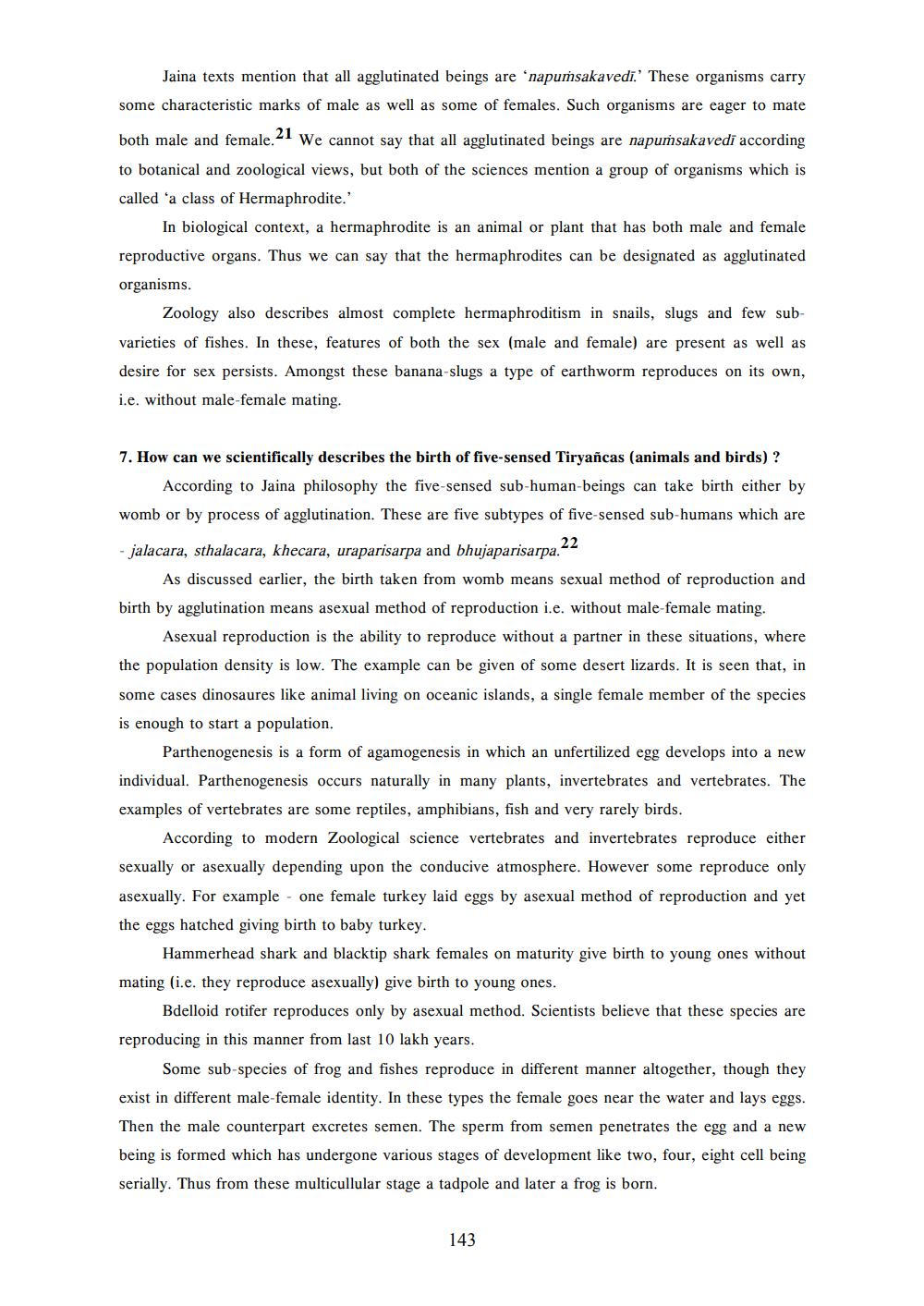________________
Jaina texts mention that all agglutinated beings are 'napussakavedi.' These organisms carry some characteristic marks of male as well as some of females. Such organisms are eager to mate
both male and female. We cannot say that all agglutinated beings are napussakavedi according to botanical and zoological views, but both of the sciences mention a group of organisms which is called 'a class of Hermaphrodite.'
In biological context, a hermaphrodite is an animal or plant that has both male and female reproductive organs. Thus we can say that the hermaphrodites can be designated as agglutinated organisms.
Zoology also describes almost complete hermaphroditism in snails, slugs and few subvarieties of fishes. In these, features of both the sex (male and female) are present as well as desire for sex persists. Amongst these banana-slugs a type of earthworm reproduces on its own, i.e. without male-female mating.
7. How can we scientifically describes the birth of five-sensed Tiryancas (animals and birds)?
According to Jaina philosophy the five-sensed sub-human beings can take birth either by womb or by process of agglutination. These are five subtypes of five-sensed sub-humans which are
-jalacara, sthalacara, khecara, uraparisarpa and bhujaparisarpa.--
As discussed earlier, the birth taken from womb means sexual method of reproduction and birth by agglutination means asexual method of reproduction i.e. without male-female mating.
Asexual reproduction is the ability to reproduce without a partner in these situations, where the population density is low. The example can be given of some desert lizards. It is seen that, in some cases dinosaures like animal living on oceanic islands, a single female member of the species is enough to start a population.
Parthenogenesis is a form of agamogenesis in which an unfertilized egg develops into a new individual. Parthenogenesis occurs naturally in many plants, invertebrates and vertebrates. The examples of vertebrates are some reptiles, amphibians, fish and very rarely birds.
According to modern Zoological science vertebrates and invertebrates reproduce either sexually or asexually depending upon the conducive atmosphere. However some reproduce only asexually. For example - one female turkey laid eggs by asexual method of reproduction and yet the eggs hatched giving birth to baby turkey.
Hammerhead shark and blacktip shark females on maturity give birth to young ones without mating (i.e. they reproduce asexually) give birth to young ones.
Bdelloid rotifer reproduces only by asexual method. Scientists believe that these species are reproducing in this manner from last 10 lakh years.
Some sub-species of frog and fishes reproduce in different manner altogether, though they exist in different male-female identity. In these types the female goes near the water and lays eggs. Then the male counterpart excretes semen. The sperm from semen penetrates the egg and a new being is formed which has undergone various stages of development like two, four, eight cell being serially. Thus from these multicullular stage a tadpole and later a frog is born.
143




